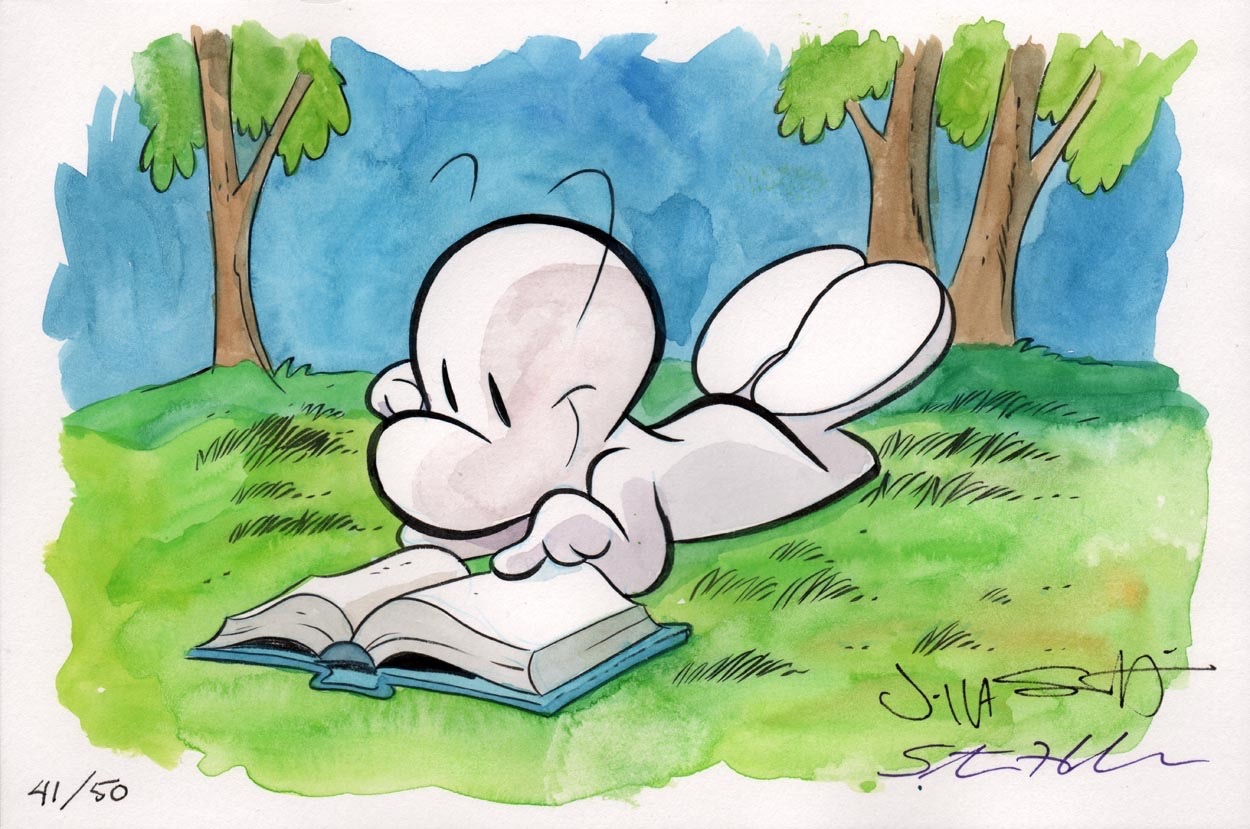If I told you a secret cabal of the comics industry’s most important players had been working behind the scenes for years to implement an important change for how comics are sold, your ears would perk up, right?
But if I told you this change was to get expanded BISAC codes for kids and YA graphic novels they’d probably perk right down again, right?
Well, trust me, this story on how BISAC has expanded their codes is a BIG DEAL. BISAC stands for Book Industry Study Group (I know, I know) and they act to do thinks like standardize book categories for booksellers, and standardize other best practices. In 2002 BISG was entrated by comcis industry experts — including no one less than Art Spiegelman – to give graphic novels their own BISAC codes, and while this sounds hopelessly in the weeds, it was breaking out sales like this that helped show the explosive growth of manga and other GNs in the early 21st century.
A similar campaign has been underway for kids graphic novels for some time — because they aren’t broken out as clearly, sales are harder to track and the explosive growth in that category isn’t that clear . But now:
Beginning in January 2017 the new BISAC subject headings will include 11 new graphic novel headings for the Juvenile Fiction category, two for Juvenile Nonfiction, 13 for Young Adult Fiction (with science fiction and fantasy split into two separate headings) and two for Young Adult
Matthew Poulter, director of membership for the Children’s Book Council, said the new BISAC codes were suggested by the CBC’s Graphic Novel Advisory Group and will allow publishers to describe the content of graphic novels more precisely.“The current BISAC codes governing children’s graphic novels seemed to be inadequate to cover the wealth of titles being published properly,” Poulter said. “Children’s graphic novels make up about 15% of total graphic novel sales and are the fastest-growing segment of the graphic novel industry. More graphic novels are being published for kids and teens and the codes pertaining to this genre were not necessarily keeping pace with this growth.”
These new numbers will help both bookstores and libraries categories this growing field of GNS and show how the category is growing. It will help with getting separate sections for kids graphic novels in libraries and bookstores and in general have them taken more seriously.
This is a change that a lot of publishers have been working on behind the scenes for a couple of years and it’s a very, very good thing. I believe the children are our future.





” BISAC stands for Book Industry Study Group (I know, I know)…”
To nitpick, BISAC stands for either “Book Industry Systems Advisory Committee” or “Book Industry Standards and Communications” (not sure which name is more correct nowadays…) to denote the subset of the Book Industry Study Group (BISG) that works to create industry standards, including categorization.
What might be nice would be to have a list of comics-specific BISACs?
Thanks for covering this important change, Heidi.
Brian – when you say a list of list of comics-specific BISACs, what exactly are you after? The BISG list the existing comics BISACs on their website – https://www.bisg.org/bisac/bisac-subject-headings-list-comics-and-graphic-novels. When the new codes become official in January 2017, I’m sure they’ll add them to the site as well.
I guess The Beat’s resident librarian could post a listing of the codes, with the required copyright disclaimer…
(Yes, I have created a census, via Books In Print, of each BISAC code per year. It doesn’t really say much, since it depends on the publishers actually, correctly, using the code.)
Currently: there are FIVE in the JUV fiction section, and FOUR in the JNF non-fiction section.
Young Adult categories were added in 2015. (The entire category was inaugurated that year.)
There’s also one Humor category for comic strips.
https://www.bisg.org/bisac/tutorial-and-faq#What does BISAC stand for?
““Children’s graphic novels make up about 15% of total graphic novel sales and are the fastest-growing segment of the graphic novel industry. ”
ONE-SIXTH Okay… maybe that’s just libraries and bookstores. Oh, wait… that market is HUGE… 9,082 public library systems with 16,536 locations. And then there are the academic libraries (3.8K), schools (98K)…
Oh, and those schools? Some have book fairs and book clubs as well!
Comments are closed.